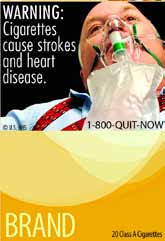[ Spring 2013 ]
Quick updates about the latest public health news from across the School and beyond.
HSPH cracks secrets of the malaria parasite
HSPH researchers, led by Manoj Duraisingh, HSPH associate professor of immunology and infectious diseases, have discovered the mechanism by which the malaria parasite, Plasmodium falciparum, evades detection by the human immune system. The parasite changes a critical protein on its surface, which it uses as one of several molecular “keys” to enter a new red blood cell. With 1.2 million malaria deaths each year worldwide—mainly children in sub-Saharan Africa—these findings could help in developing drug therapies.
Workplace wellness: HSPH leads by example
 The CEO Roundtable on Cancer recently accredited HSPH with the CEO Cancer Gold Standard™, recognizing the School’s efforts to reduce cancer risk for employees and family members by promoting healthy lifestyle choices, cancer screenings and access to quality treatment.
The CEO Roundtable on Cancer recently accredited HSPH with the CEO Cancer Gold Standard™, recognizing the School’s efforts to reduce cancer risk for employees and family members by promoting healthy lifestyle choices, cancer screenings and access to quality treatment.
SNAP diets fall short on nutrition
The federal Supplemental Nutrition Assistance Program (SNAP) is “a vital program with the potential to influence the diets of millions of vulnerable Americans,” said Cindy Leung, SD ’12. But Leung and other School researchers have found that SNAP participants’ diets are actually worse than those of low-income adults not participating in the program, with significantly lower intakes of whole grains and higher intakes  of fruit juice, white potatoes and red meat, and too many sugary beverages, particularly among women. Researchers speculate that SNAP beneficiaries may be spending their allotments on cheaper, nutrient-poor foods. Leung and her colleagues conclude that “further consideration needs to be given to creating incentives for SNAP participants to access healthier foods, and to limit the purchase of unhealthy food with SNAP benefits.”
of fruit juice, white potatoes and red meat, and too many sugary beverages, particularly among women. Researchers speculate that SNAP beneficiaries may be spending their allotments on cheaper, nutrient-poor foods. Leung and her colleagues conclude that “further consideration needs to be given to creating incentives for SNAP participants to access healthier foods, and to limit the purchase of unhealthy food with SNAP benefits.”
Dean Frenk Strengthens Collaborations During China Trip
In a week long trip to China in January 2013, HSPH Dean Julio Frenk brought an important message about public health: It’s essential to continued human progress.
Frenk’s trip, which took him to Shanghai, Beijing and Hong Kong, was aimed at strengthening the School’s existing ties in China, connecting with health sector leaders and meeting with some 150 alumni and other supporters of the School.
At a speech to the Asia Society in Hong Kong, Frenk spoke of the “profoundly important connection” between public health and economic growth, and of ways that HSPH can work with the government, organizations, businesses, and individuals to help promote both health and prosperity in China.
Frenk also signed a renewed memorandum of understanding with the University of Hong Kong School of Public Health, which is led by HSPH alumnus Gabriel Leung, MPH ’99, PDS ’05. The two schools have collaborated since the 1990s on public health research relevant to China and the Asia-Pacific region.
Is it ADHD, or is he just young for his grade?
 Being younger than one’s classmates may lower a child’s academic performance throughout childhood and increase the likelihood of being prescribed medication for attention-deficit/hyperactivity disorder (ADHD), according to a study from HSPH and the University of Iceland. Of nearly 12,000 Icelandic students ages 9 to 12, students in the youngest one-third of their class were 50 percent more likely than older peers to be prescribed ADHD medications. “Kids may just be acting their age if they’re nearly a year younger than some of their peers and are struggling a bit emotionally and academically,” said senior author Sonia Hernández-Díaz, HSPH associate professor of epidemiology.
Being younger than one’s classmates may lower a child’s academic performance throughout childhood and increase the likelihood of being prescribed medication for attention-deficit/hyperactivity disorder (ADHD), according to a study from HSPH and the University of Iceland. Of nearly 12,000 Icelandic students ages 9 to 12, students in the youngest one-third of their class were 50 percent more likely than older peers to be prescribed ADHD medications. “Kids may just be acting their age if they’re nearly a year younger than some of their peers and are struggling a bit emotionally and academically,” said senior author Sonia Hernández-Díaz, HSPH associate professor of epidemiology.
Air pollution down, life expectancy up
 A new HSPH study—the largest of its kind to date—has documented continued reductions in air pollution and improved life expectancy in 545 U.S. counties between 2000 and 2007. Air pollution has been declining steadily in the U.S. since 1980, but at a slower rate since 2000. HSPH researchers set out to ascertain whether even these relatively smaller decreases in particulate levels are still improving life expectancy. Lead study author Andrew Correia, HSPH PhD candidate in the Department of Biostatistics, concluded, “Despite the fact that the U.S. population is exposed to much lower levels of air pollution than 30 years ago, it appears that further reductions in air pollution levels would continue to benefit public health.”
A new HSPH study—the largest of its kind to date—has documented continued reductions in air pollution and improved life expectancy in 545 U.S. counties between 2000 and 2007. Air pollution has been declining steadily in the U.S. since 1980, but at a slower rate since 2000. HSPH researchers set out to ascertain whether even these relatively smaller decreases in particulate levels are still improving life expectancy. Lead study author Andrew Correia, HSPH PhD candidate in the Department of Biostatistics, concluded, “Despite the fact that the U.S. population is exposed to much lower levels of air pollution than 30 years ago, it appears that further reductions in air pollution levels would continue to benefit public health.”
Lowering women’s heart attack risk: Berry good news
 Women who eat three or more half-cup servings of blueberries and strawberries each week may lower their risk of heart attack, the leading cause of death for women. A recent study led by researchers from HSPH and the University of East Anglia found that the dietary flavonoid anthocyanin in these berries may improve blood flow and counteract plaque buildup. “Blueberries and strawberries can easily be incorporated into what women eat,” said HSPH senior author Eric Rimm, associate professor of nutrition and epidemiology. “This simple dietary change could have a significant impact on prevention efforts.”
Women who eat three or more half-cup servings of blueberries and strawberries each week may lower their risk of heart attack, the leading cause of death for women. A recent study led by researchers from HSPH and the University of East Anglia found that the dietary flavonoid anthocyanin in these berries may improve blood flow and counteract plaque buildup. “Blueberries and strawberries can easily be incorporated into what women eat,” said HSPH senior author Eric Rimm, associate professor of nutrition and epidemiology. “This simple dietary change could have a significant impact on prevention efforts.”
Documenting public health concerns at world’s largest gathering
 Every 12 years, a massive temporary city is created in Allahabad, India, to accommodate the tens of millions of Hindu worshippers gathered to bathe in the sacred waters of the Ganga, Yamuna and Saraswati rivers during the Kumbh Mela festival. It is the largest human gathering on earth.
Every 12 years, a massive temporary city is created in Allahabad, India, to accommodate the tens of millions of Hindu worshippers gathered to bathe in the sacred waters of the Ganga, Yamuna and Saraswati rivers during the Kumbh Mela festival. It is the largest human gathering on earth.
This year, a team of HSPH faculty members and students, coordinated and funded by the School’s FXB Center for Health and Human Rights, implemented a real-time disease surveillance system at the Mela— the first of its kind in a transient mass gathering. The project was part of a larger qualitative study that focused on health care delivery, water distribution, sanitation systems, and stampede mitigation strategies at this year’s festival, which was held from January 12 to March 10 and drew an estimated 80 million pilgrims.
The team’s innovative surveillance tool, the goal of which was to bolster understanding of public health concerns during mass gatherings and migrations, was noted in the February 8, 2013 New York Times.
Cigarette warnings: The power of pictures
 New research from HSPH and Legacy®, a national public health foundation devoted to reducing tobacco use in the U.S., suggests that graphic cigarette warning labels may help smokers quit—including those who are poor and belong to racial/ethnic minorities, who often struggle harder to quit than others. The new study—among the first to compare pictorial labels with text-only labels across diverse racial/ethnic and socioeconomic groups—shows that powerful pictorial warning labels (mandated by the 2009 Family Smoking Prevention and Tobacco Control Act) play a lifesaving role in motivating smokers to quit. Despite this evidence, a U.S. appeals court in August 2012 ruled that cigarette companies do not need to comply with federal rules requiring their products to show graphic warning images. In March 2013, while defending the constitutionality of graphic warnings, the government dropped its push for such images on cigarette labels and said it would craft new anti-smoking ads. Senior author Vish Viswanath, HSPH associate professor of society, human development and health, said, “Given the disproportionate burden of tobacco-related disease faced by the poor and minorities, mandating strong pictorial warnings is an effective way to communicate the risk of tobacco use.”
New research from HSPH and Legacy®, a national public health foundation devoted to reducing tobacco use in the U.S., suggests that graphic cigarette warning labels may help smokers quit—including those who are poor and belong to racial/ethnic minorities, who often struggle harder to quit than others. The new study—among the first to compare pictorial labels with text-only labels across diverse racial/ethnic and socioeconomic groups—shows that powerful pictorial warning labels (mandated by the 2009 Family Smoking Prevention and Tobacco Control Act) play a lifesaving role in motivating smokers to quit. Despite this evidence, a U.S. appeals court in August 2012 ruled that cigarette companies do not need to comply with federal rules requiring their products to show graphic warning images. In March 2013, while defending the constitutionality of graphic warnings, the government dropped its push for such images on cigarette labels and said it would craft new anti-smoking ads. Senior author Vish Viswanath, HSPH associate professor of society, human development and health, said, “Given the disproportionate burden of tobacco-related disease faced by the poor and minorities, mandating strong pictorial warnings is an effective way to communicate the risk of tobacco use.”
Download a PDF of Frontlines here